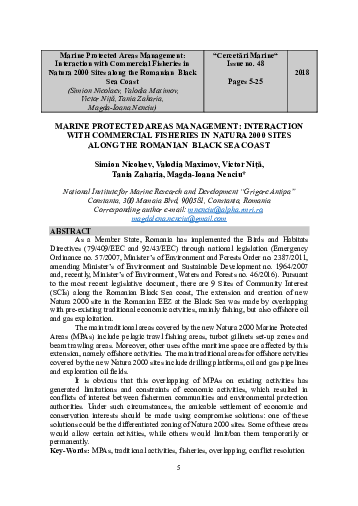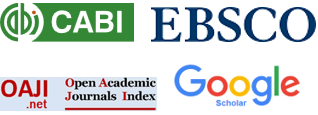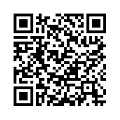Marine Protected Areas Management: Interaction with Commercial Fisheries in Natura 2000 Sites along the Romanian Black Sea Coast
DOI:
https://doi.org/10.55268/CM.2018.48.5Keywords:
MPAs, traditional activities, fisheries, overlapping, conflict resolutionAbstract
As a Member State, Romania has implemented the Birds and Habitats Directives (79/409/EEC and 92/43/EEC) through national legislation (Emergency Ordinance no. 57/2007, Minister’s of Environment and Forests Order no. 2387/2011, amending Minister’s of Environment and Sustainable Development no. 1964/2007 and, recently, Minister’s of Environment, Waters and Forests no. 46/2016). Pursuant to the most recent legislative document, there are 9 Sites of Community Interest (SCIs) along the Romanian Black Sea coast, The extension and creation of new Natura 2000 site in the Romanian EEZ at the Black Sea was made by overlapping with pre-existing traditional economic actvities, mainly fishing, but also offshore oil and gas exploitation.The main traditional areas covered by the new Natura 2000 Marine Protected Areas (MPAs) include pelagic trawl fishing areas, turbot gillnets set-up zones and beam trawling areas. Moreover, other uses of the maritime space are affected by this extension, namely offshore activities. The main traditional areas for offshore actvities covered by the new Natura 2000 sites include drilling platforms, oil and gas pipelines and exploration oil fields.
It is obvious that this overlapping of MPAs on existing activities has generated limitations and constraints of economic activities, which resulted in conflicts of interest between fishermen communities and environmental protection authorities. Under such circumstances, the amicable settlement of economic and conservation interests should be made using compromise solutions: one of these solutions could be the differentiated zoning of Natura 2000 sites. Some of these areas would allow certain activities, while others would limit/ban them temporarily or permanently.

Downloads
Published
How to Cite
Issue
Section
License
This is an open access journal, which means that all content is freely available without charge to the user or his/her institution. Users are allowed to read, download, copy, distribute, print, search, or link to the full texts of the articles, or use them for any other lawful purpose, without asking prior permission from the publisher or the author. This is in accordance with the BOAI definition of open access.






